|
Licensed Victuallers 101-110 Asylum Road, Peckham, SE15 2SQ
|
In 1826 Joseph Proud Hodgson, a distiller from Finsbury, conceived the idea of establishing an institution in which poor elderly members of the licensed victuallers trade (holders of a licence to run a public house), and their wives or widows, could spent their remaining years. He called a meeting of influential licensed victuallers and the group decided to form a society entitled the Licensed Victuallers Asylum.
Fund-raising was successful and in 1827 a 6-acre piece of land just off the Old Kent Road in Camberwell was acquired. The foundation stone for the Asylum was laid in May 1828, with full Masonic honours, by the Duke of Sussex.
The central portion of the Asylum was completed first in 1830 and contained 43 almshouses, a chapel and a chaplain's residence, a Board Room, a Court Room and a library. It filled up quickly and such was the demand for more places that the south wing was built in 1831. The north wing opened in 1833. The site then contained three 2-storey blocks grouped around two green lawns. The Asylum provided 103 separate almshouses of 3 rooms each (plus conveniences).
In 1835 the society began to provide weekly allowances of money to the residents.
In 1840 two lodges were added by the front gate.
Work began on a 'Ladies Wing' in 1849, the foundation stone being laid by the Prince Consort. It was completed the following year and contained 23 almshouses.
Another wing was added in 1858, consisting of 34 almshouses. It was named the Albert Wing in honour of the institution's patron, who had once again laid the foundation stone.
In 1864 a marble statue of the late Prince Consort, some 16 ft (5 metres) high, was erected in the grounds in front of the central building, facing Asylum Road. It was unveiled by the Prince of Wales.
In 1866 William Smalley, general secretary for the Licensed Victuallers Charity, donated £1,000 to the society. It was decided to use the money to build another wing of an additional 10 almshouses. This was named the Smalley Wing, with its foundation stone being laid by the Duke of Edinburgh. The Asylum was then deemed to be complete - with 170 almshouses in separate and distinct buildings, housing 205 residents.
In 1877 the weekly living allowances increased to 12 shillings for a married couple and 8 shillings for a single person; members of the Incorporated Society of Licensed Victuallers received an extra shilling a week. Each almshouse also received a weekly supply of coal. Residents were also entitled to medical attendance and medicine, and even wine when recommended by the medical officer.
In 1921 the Asylum was renamed the Licensed Victuallers Benevolent Institution.
A large ornamental gateway was added in 1927, designed to celebrate the centenary of the Asylum.
During WW2 (1939-1945) the tenants were evacuated to Denham, Bucks.
The buildings received some bomb damage and the chapel was almost destroyed by an incendiary bomb, but its stained glass windows, depicting the life of Christ, and the stone memorial tablets, happily survived.
At the end of the war the Board of Management decided that the new site in Denham was preferable. In 1959 the last residents - and the statue of Prince Albert - were transferred to Denham Garden Village, which had been built in 1955.
Current status
In 1960 the buildings were sold to the London Borough of Southwark, which designated it as social housing and renamed it Caroline Gardens.The chapel, shored up to stabilise it from the bomb damage, was never used as a chapel again. A scheme to make it into a small theatre never materialised. Plans in 1977 to restore it also failed. Recently it was renamed the Asylum and is used as an arts space and even a venue for wedding parties.
N.B. Photographs obtained in April 2009
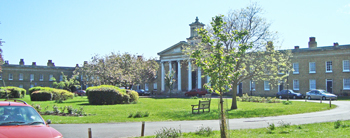
Once completed, the institution was the largest of its kind in London.
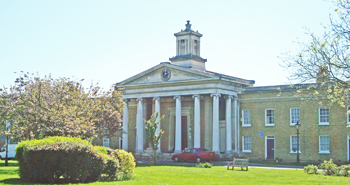
The central block was completed in 1830.

The South Wing was added in 1831.
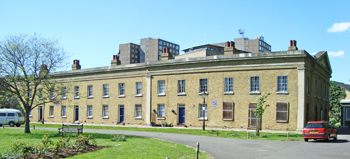
The North Wing was completed in 1833.
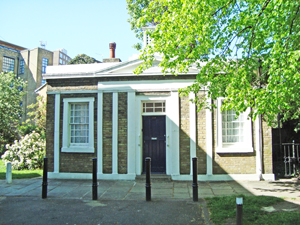
The northern gatehouse was built in 1840.
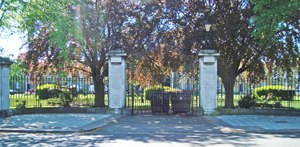
The old main gateway on Asylum Road is now no longer in use.
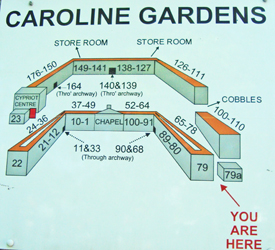
The site plan for the complex. Southwark Council named it Caroline Gardens after Caroline Secker, a former resident. She was the widow of James Secker, the Royal Marine sergeant who was said to have caught Nelson when he fell during the Battle of Trafalgar.
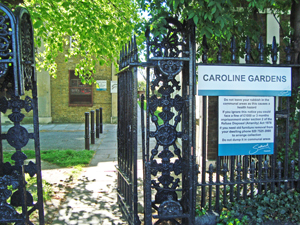
The northern gate is for pedestrians only.
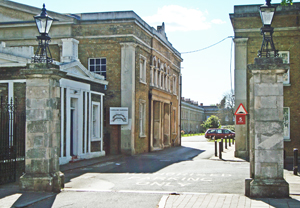
The entrance by the southern gatehouse is for vehicular access.
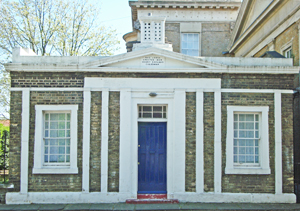
The southern gatehouse.
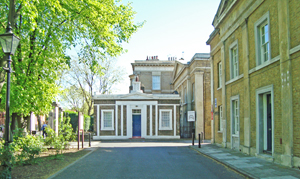
The internal road facing the southern gatehouse.
References (Accessed 22nd July 2020)
Allport D 1841 Collections Illustrative of the Geology, History, Antiquities, and Associations of Camberwell and Neighbourhood. Self-published.
Southwark Council (undated) Caroline Gardens conservation area appraisal.
https//heritage.southwark.gov.uk
http://maverickprojects.co.uk
https://aim25.com
https://artlicksweekend.com
https://britishlistedbuildings.co.uk
https://coalholesoflondon.wordpress.com
https://collage.cityoflondon.gov.uk
https://historicengland.org.uk (1)
https://historicengland.org.uk (2)
https://londongardenstrust.org
https://peckhampeculiar.tumblr.com
https://player.bfi.org.uk
www.antiqueprintclub.com
www.british-history.ac.uk
www.flickr.com
www.geograph.org.uk
www.licensedtradecharity.org.uk
www.peckhamsociety.org.uk (1)
www.peckhamsociety.org.uk (2)
www.rct.uk
Last updated 22nd July 2020
Click here to return to Almshouses of London alphabetical list
Click here to return to home page